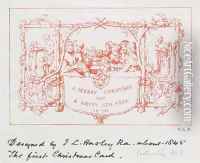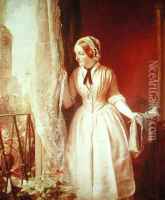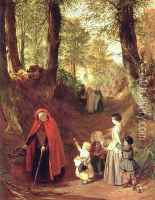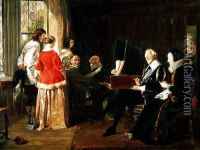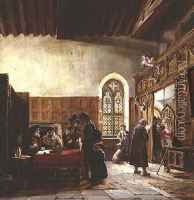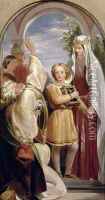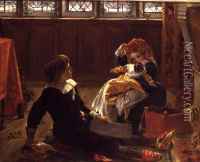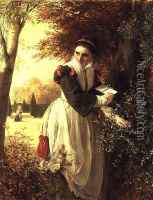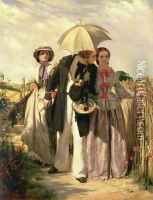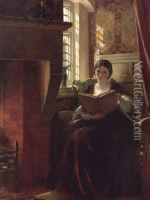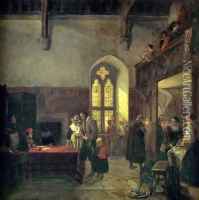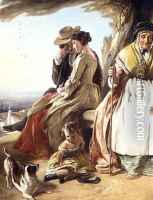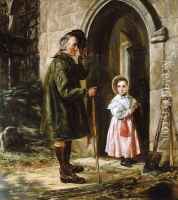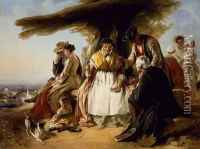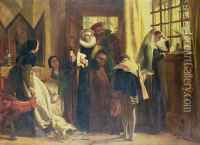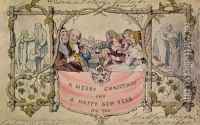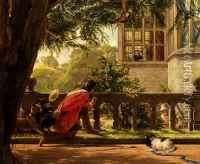John Callcott Horsley Paintings
John Callcott Horsley was an English painter of historical genres and a member of the Royal Academy. Born on January 29, 1817, in London, he was a relative of the famous composer Sir John Horsley and nephew to the landscape painter Sir Augustus Wall Callcott. Horsley's education in art began early; he studied at the Royal Academy Schools and was influenced by the works of Sir Joshua Reynolds and the Pre-Raphaelite Brotherhood, though he did not join the latter.
Horsley's style is characterized by his adherence to the high standards of Victorian genre painting and his attention to detail. He often depicted scenes of social importance and everyday life, including the rituals and customs of the time. He was also known for his historical paintings, which were typically romanticized depictions of earlier periods.
One notable contribution of Horsley to British culture was his design of the first Christmas card, commissioned by Sir Henry Cole in 1843. This card depicted a family celebrating the holiday and was a significant innovation in social communication at the time.
Despite his successes, Horsley's career was not without controversy. He was known by the nickname 'Clothes-Horsley' for his campaign against the use of nude models in art schools, a stance that put him at odds with many of his contemporaries. This conservative view was seen as out of step with the progressive artistic movements of the late 19th century.
Throughout his life, Horsley was committed to the art community. He served as a council member and treasurer for the Royal Academy and was active in the affairs of other artistic institutions. His works were exhibited regularly, and he garnered respect and recognition for his artistic talents and contributions to British art.
John Callcott Horsley's legacy is that of a skilled genre painter who captured the essence of Victorian society. He passed away on October 18, 1903, leaving behind a body of work that continues to be appreciated for its historical value and aesthetic quality.
